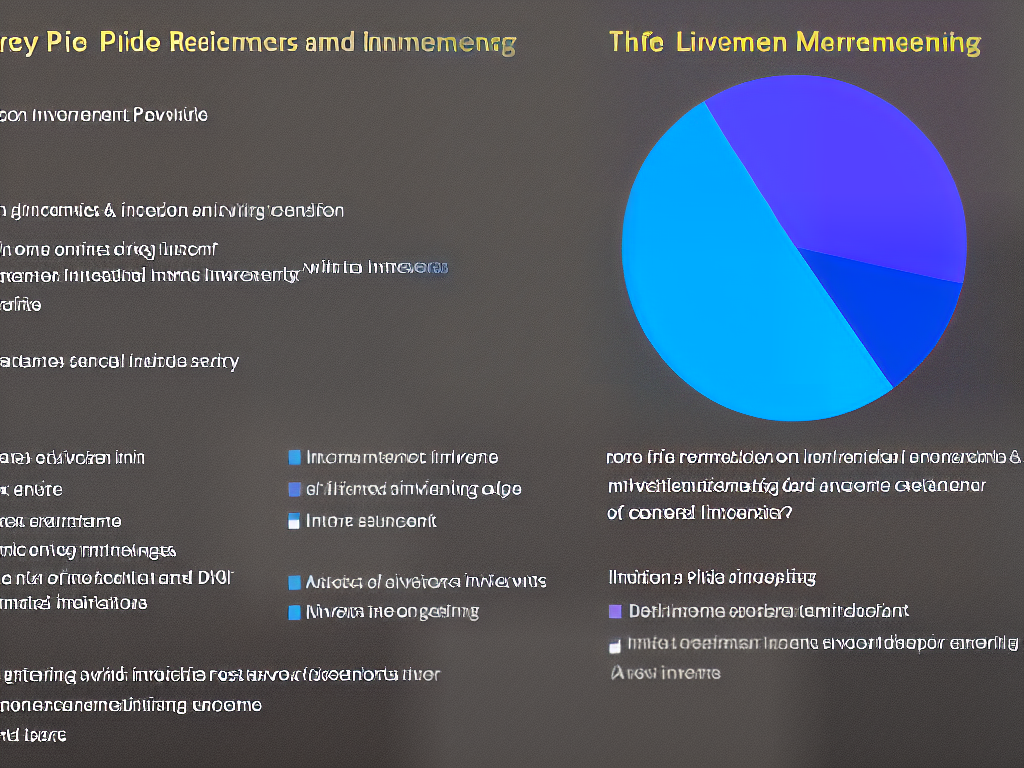IRA Estate Planning
As adult individuals, it is crucial to become familiar with the various aspects of Individual Retirement Accounts (IRAs) and how they interplay with estate planning. Understanding the intricacies of IRAs, designating beneficiaries, required minimum distributions, inherited IRAs, IRA rollovers, and conversions, among other topics, will not only provide optimal retirement savings but also protect the interests and legacy of our loved ones when it comes to estate planning. The following take a closer look at these critical components of IRA estate planning, allowing for more informed decision-making and providing peace of mind in planning for the future.
Understanding IRAs
Individual retirement accounts (IRAs) come in different forms and offer tax benefits and rules governing contributions and withdrawals for people saving for retirement. The two primary types of IRAs are traditional IRAs and Roth IRAs, which differ in the way they provide tax savings. Maximizing wealth transfer to beneficiaries requires understanding each type of IRA.
Traditional IRAs provide tax-deductible contributions and tax-deferred growth, meaning contributions made are not subject to income tax, and funds grow inside the account. Withdrawals are taxed at an individual’s ordinary income tax rate, typically in retirement. In contrast, Roth IRAs contribute after-tax money, meaning no immediate tax deduction for contributions. Investment gains and qualified withdrawals are free from federal income tax in retirement, making them useful for estate planning.
Contribution limits are set by the Internal Revenue Service (IRS) and vary annually based on inflation. For 2021, the maximum contribution limit for both traditional and Roth IRAs is $6,000 per year or $7,000 for individuals aged 50 and older. Contributions can be made by individuals below a certain adjusted gross income level, which varies based on the IRA type and tax filing status. Considering these limits is essential in estate planning and can prevent unnecessary taxes and penalties.
IRAs have specific rules regarding the age at which individuals can access funds without penalties. Traditional IRA withdrawals are penalty-free at age 59 ½, with withdrawals before that age incurring a 10% penalty tax on top of regular income tax. Roth IRA distributions of contributions are penalty-free and tax-free at any time, while earnings are tax-free after the account has been open for five years and the individual is at least 59 ½ years old.
Managing required minimum distributions (RMDs) is a crucial element of estate planning for traditional IRAs. RMDs refer to the minimum amount that must be withdrawn each year, starting at age 72. If RMDs are not taken, a 50% penalty tax may be applied to the amount that should have been withdrawn. Unlike Roth IRAs, traditional IRAs are subject to RMDs during the account owner’s lifetime. However, both types of IRAs have RMD rules for inherited IRAs that beneficiaries must follow upon the account holder’s death. It is vital to integrate IRA distribution rules and RMDs into your estate planning to ensure that your heirs can access funds while minimizing the risk of tax penalties.

Designating Beneficiaries
In addition to managing RMDs, designating beneficiaries for your IRA is another essential aspect of estate planning. Properly selecting and designating beneficiaries ensures that your IRA assets will be distributed as intended after your passing. To maintain alignment with your current wishes and life circumstances, it is critical to review and update beneficiary designations routinely. Failure to keep beneficiary information current can lead to unintended consequences, including significant impacts on the tax efficiency and wealth distribution of your estate. By carefully considering both RMDs and beneficiary designations, you can create a comprehensive IRA estate plan that caters to the needs of your loved ones.
Naming your estate as the beneficiary of your IRA may seem like the simplest approach, but it can create several complications. When an estate is the beneficiary, the IRA’s assets must be distributed according to the provisions of your will and will be subject to probate, which is both a time-consuming and a costly process. Additionally, the lack of a designated individual beneficiary for an IRA can result in accelerated mandatory withdrawals, increasing the tax liability and reducing the potential for tax-deferred growth.
In some instances, it may be appropriate to name a trust as the beneficiary of your IRA. Trusts can provide benefits such as asset protection, control over the distribution of assets, and professional management. However, designating a trust as an IRA beneficiary adds complexity to the withdrawal rules and may result in less favorable tax treatment for the IRA’s assets. It is essential to consult with an estate planning attorney to ensure that the trust language and provisions align with your goals and are compliant with the rules governing IRA distributions.
When naming specific individuals as beneficiaries for your IRA accounts, you are providing them with the greatest flexibility related to the tax treatment of those assets. Spouses have the option to roll over the inherited IRA into their own IRA, which provides continued tax-deferred growth. Non-spouse beneficiaries can typically either establish an Inherited IRA or transfer the assets to their own account, allowing them to stretch out the required minimum distributions (RMDs) over their life expectancy. This strategy enables the beneficiaries to minimize the tax implications and optimize the growth potential of the inherited assets.
When it comes to IRA estate planning, it is crucial to carefully consider your options in designating beneficiaries for your accounts. This decision can significantly impact your estate plan, your loved ones, and the tax efficiency of your assets. Regularly reevaluating your beneficiary designations and consulting with an estate planning professional can help ensure your assets are distributed according to your wishes, maximizing the benefits available to your beneficiaries.

Required Minimum Distributions (RMDs)
An important aspect of IRA estate planning is understanding Required Minimum Distributions (RMDs), as they influence the value and longevity of your retirement savings. RMDs are minimum amounts that must be withdrawn from your traditional IRA, Roth 401(k), or other employer-sponsored retirement plans once you reach age 72. These distributions must start by April 1 of the year following the year in which you turn 72, with subsequent withdrawals required by December 31 each year thereafter. Keep in mind that these rules generally apply to traditional IRAs and most other tax-deferred retirement accounts, but not to Roth IRAs for the original account owner. Grasping the concept of RMDs and incorporating them into your estate planning decisions can ensure a better financial outcome for your beneficiaries.
One of the key differences between traditional and Roth IRAs is the way they are taxed. Distributions from traditional IRAs are typically subject to regular income tax, while qualified distributions from Roth IRAs are tax-free. However, the rules surrounding RMDs for these accounts differ. With traditional IRAs, RMDs must be taken, whether you need the income or not, which can have significant implications for estate planning. For example, a larger IRA balance can mean higher RMDs which could push you into a higher tax bracket, leaving less to pass on to your heirs.
On the other hand, Roth IRAs do not have RMDs for the account owner during their lifetime, allowing the funds to grow tax-free for a longer period of time. This can provide additional flexibility in estate planning, as the account owner can leave the Roth IRA untouched if the funds are not needed for personal expenses. In this scenario, the Roth IRA can serve as a valuable source of tax-free inheritance for your heirs.
It’s important to note that non-spouse beneficiaries of either traditional or Roth IRAs are subject to RMD rules, regardless of the decedent’s age at death. Non-spouse beneficiaries will have to begin taking distributions by December 31 of the year following the original account owner’s death, potentially incurring taxes on those withdrawals. Careful planning can help minimize this tax burden by strategically naming beneficiaries, considering the use of trusts, and utilizing other advanced estate planning strategies.
Ensuring compliance with Required Minimum Distributions (RMDs) is a crucial aspect of IRA estate planning, as not taking the full amount or missing the deadline can lead to a substantial penalty of 50% of the amount not withdrawn. This penalty can significantly erode your retirement savings and negatively impact your estate plan. Working with a financial advisor or estate attorney can help you stay compliant with RMD regulations while optimizing your estate plan for tax efficiency and protecting your legacy for future generations.

Inherited IRAs
Another key component of IRA estate planning is understanding the rules and tax implications surrounding inherited IRAs, a common instrument in estate plans. Factors to consider when dealing with an inherited IRA include the distinction between spousal and non-spousal beneficiaries, as well as the various distribution options available. Working cohesively with your financial advisor or estate attorney allows for comprehensive estate planning that takes inherited IRAs and their complexities into account, further securing your legacy for future generations.
One important distinction to make when discussing inherited IRAs is the difference between spousal and non-spousal beneficiaries. A spousal beneficiary is a surviving spouse who inherits their deceased spouse’s IRA. In this case, the spouse has several options, including treating the IRA as their own, either by transferring the assets to their own IRA or by redesignating the inherited IRA in their own name. This allows the surviving spouse to postpone required minimum distributions (RMDs) until they reach the age of 72. Meanwhile, non-spousal beneficiaries, such as children or other family members, generally have fewer options when inheriting an IRA, and are required to begin taking distributions immediately.
It is crucial to understand the tax implications involved with inheriting an IRA. In most cases, distributions from an inherited IRA are considered taxable income. However, if the inherited IRA is a Roth IRA, the distributions may be tax-free. Typically, the tax consequences depend on the type of IRA, the deceased person’s age, and the relationship of the beneficiary to the deceased person. It is wise for beneficiaries to consult with a tax professional to understand the specific tax implications of their inherited IRA.
There are several distribution options available to those inheriting an IRA, depending on their relationship to the deceased account holder. Options include taking a lump-sum distribution, setting up an Inherited IRA account and taking annual distributions using the “stretch option,” or taking the RMDs method, which is determined by the beneficiary’s age and the original account holder’s age. Spousal beneficiaries have the additional option to treat the inherited IRA as their own, which can help defer distributions and potentially reduce taxes owed.
The “stretch” IRA option is an attractive choice for many beneficiaries since it enables them to spread the distributions from the inherited IRA over their lifetime. This approach can potentially lower the tax burden and prolong the IRA’s tax-deferred growth. However, with the introduction of the SECURE Act, the stretch IRA option may be limited for some non-spousal beneficiaries. In many cases, these beneficiaries must now fully distribute the inherited IRA within ten years of the original account holder’s death. Nonetheless, there are still strategies for beneficiaries to minimize their tax liability within this 10-year window, including taking distributions based on their yearly income.

IRA Rollovers and Conversions
Understanding the process of rolling over assets from other retirement accounts into an individual retirement account (IRA) is a key concept in IRA estate planning. Rollovers can provide individuals with greater flexibility in managing their retirement savings and may help consolidate retirement assets into a single account. When executing a rollover, it is vital to abide by the 60-day rule, which states that individuals must complete the rollover within 60 days of receiving the distribution from their previous retirement account, such as a 401(k) or 403(b). Failing to complete the rollover in this period can lead to taxes and penalties, so it is crucial to adhere to this timeline. Combining the knowledge of rollover options and the changes brought by the SECURE Act, individuals can better plan their IRA estate to meet their objectives and minimize tax implications.
Another important aspect of IRA rollovers is the ability to convert a traditional IRA into a Roth IRA, which can have various long-term benefits. Unlike a traditional IRA, which offers tax-deferred growth, Roth IRAs provide tax-free growth and withdrawals, allowing individuals to avoid taxation on their retirement savings in the future. This can be particularly advantageous in estate planning, as the tax-free nature of Roth IRAs can lower inheritance tax burdens for beneficiaries.
When converting a traditional IRA into a Roth IRA, it is important to be mindful of the conversion’s tax consequences. Because traditional IRA contributions are made with pre-tax dollars, converting to a Roth IRA requires individuals to pay taxes on the converted amount. This can result in a substantial tax bill, particularly if the IRA holds a significant sum. But it is important to weigh this against the potential long-term benefits of tax-free growth and withdrawals a Roth IRA provides, especially if you anticipate being in a higher tax bracket during your retirement years.
To better navigate the tax implications of a Roth IRA conversion, individuals may choose to convert their traditional IRA gradually over several years. This process, known as “partial IRA conversions” or “Roth IRA laddering,” can help mitigate the immediate tax impact and enable a more strategic approach to retirement and estate planning. Before deciding to convert, it is crucial to consult with a financial professional to ensure that a Roth conversion makes sense given your specific financial situation and estate planning goals.
Considering the potential inheritance tax benefits of Roth IRAs, transferring your retirement savings into a Roth account can be a powerful estate planning strategy. However, it is important to note that Roth IRAs are still subject to required minimum distributions (RMDs) for beneficiaries, which may impact the account’s long-term growth potential after your passing. As with any financial decision, it is essential to balance the benefits and potential drawbacks of IRA rollovers and conversions to determine the optimal strategy for preserving and passing on your wealth to future generations.

IRAs and Trusts
A pivotal aspect of IRA estate planning is deciding upon the right beneficiary. One option to consider is naming a trust as the beneficiary of an IRA, which provides a greater level of control over the management and distribution of IRA assets after the account holder’s death. By specifying the terms and conditions within the trust, the account holder can ensure that the funds are distributed according to their wishes even after they have passed away. This can be particularly important when trying to provide for minor children, disabled family members, or individuals who may not manage the money responsibly if given direct control over the funds.
Another advantage of using a trust as the IRA beneficiary is the potential for asset protection. In situations where the IRA owner is concerned about creditors or legal issues that might arise for their beneficiaries, a trust can offer some level of protection from these potential risks. By holding the IRA assets within the trust, they are generally shielded from creditors, as long as the trust has been properly drafted and structured. This can provide peace of mind for the account holder, knowing that their hard-earned retirement savings will not be lost to creditor claims.
However, there are also some potential disadvantages to consider when naming a trust as an IRA beneficiary. One key concern is the potential tax implications of this strategy. When an IRA is passed directly to an individual beneficiary, they can take advantage of the “stretch IRA” strategy, which allows them to continue taking Required Minimum Distributions (RMDs) based on their life expectancy. This can potentially extend the tax-deferred growth of the IRA assets for many years. When a trust is named as the beneficiary, the stretch IRA strategy may not be available, potentially leading to a more accelerated distribution schedule and higher taxes overall.
In addition to the tax implications, another disadvantage is the complexity and cost associated with establishing and administering the trust. Properly setting up a trust involves working with experienced legal and financial professionals, which can incur substantial fees. Additionally, administering the trust after the IRA owner’s death can be a complex and time-consuming process, potentially resulting in additional legal fees and ongoing administrative costs.
Given the intricacies of IRA estate planning, it is essential to carefully consider the pros and cons of using a trust as an IRA beneficiary. While the increased control and asset protection offered by a trust may be appealing, understanding the potential tax implications and administrative costs involved in this strategy is crucial. Consultation with experienced professionals can help ensure a well-informed decision is made, tailored to the account holder’s unique circumstances and objectives.

IRA Gifting Strategies
Exploring various ways to allocate IRA assets, such as gifting, can further support established estate planning objectives while minimizing taxes. Gifting IRA assets through methods like Qualified Charitable Distributions (QCDs), IRA beneficiaries, and IRA trusts can be valuable components of an individual’s IRA estate plan as they offer several tax benefits and uniquely allocate resources during one’s lifetime or upon death. Balancing these strategies with the choice of establishing a trust as an IRA beneficiary can ensure a more comprehensive estate plan that effectively manages taxation and achieves desired outcomes for benefiting loved ones or supporting charitable causes.
Qualified Charitable Distributions (QCDs) are direct transfers of funds from an individual’s IRA to a qualified charity, which can fulfill the individual’s Required Minimum Distribution (RMD) obligation without incurring a taxable event. This can be especially advantageous for individuals over the age of 72, as it allows them to meet RMD obligations while preventing an increase in their federal income tax rate due to the additional income. Additionally, QCDs can be advantageous for individuals who do not itemize deductions, as they could potentially be used to maximize the tax benefits of charitable giving. It is essential to make sure the chosen charity is eligible for QCDs, as not all nonprofits qualify for this type of donation.
Another gifting strategy involving IRA assets includes designating beneficiaries for the IRA account itself. By naming specific individuals or entities as beneficiaries, an individual can ensure that the assets within the IRA are distributed according to their wishes upon death. This method can also offer tax advantages for the beneficiaries, who can choose to stretch out the distribution of the assets over their life expectancy, potentially reducing their tax liability. However, the SECURE Act of 2019 has imposed a 10-year distribution requirement on most non-spouse beneficiaries, so working with a financial advisor to understand the tax implications and adjust the overall estate plan accordingly is essential.
Establishing an IRA trust is another option for gifting IRA assets. An IRA trust can be advantageous for individuals who wish to retain more control over the distribution of the assets, for example, by providing protection from creditors or divorce, or ensuring that the IRA account funds are used according to specific conditions or purposes. The trust can be structured as either a conduit trust, where the required minimum distributions are distributed directly to the beneficiaries, or an accumulation trust, in which the trustee has discretion over the distributions. Properly drafting and establishing an IRA trust is a complex process and should be done under the guidance of an estate planning or tax attorney.
One creative way to approach IRA estate planning and achieve a lasting impact on causes you value, while preserving your desired legacy, is through Required Minimum Distributions (RMDs). These can be strategically used to fund gifting strategies outside of Qualified Charitable Distributions, such as allocating RMDs toward a donor-advised fund, or using the RMDs to purchase life insurance or a charitable gift annuity. By doing so, individuals can enjoy additional tax benefits and create a lasting impact on selected causes. However, it is crucial to engage in careful planning and seek guidance from a competent financial professional to prevent unintended adverse tax consequences or potential violations of RMD rules.

IRA Rules and Limitations
Understanding the rules and limitations of contributions is another important aspect to consider when planning for your IRA in your estate. An Individual Retirement Account (IRA) is a tax-advantaged account that helps people save for retirement. For a traditional IRA, the annual contribution limit for 2021 and 2022 is $6,000 for individuals under age 50, and $7,000 for those aged 50 and older. Being aware of these limits is essential to avoid a 6% excise tax on excess contributions, ensuring a smooth and well-planned estate and legacy for the future.
Withdrawals from your IRA are also subject to various rules and limitations. Distributions taken from a traditional IRA before the age of 59½ are typically subject to a 10% early withdrawal penalty and may also be subject to income taxes, depending on your individual circumstances. However, there are certain exceptions to the early withdrawal penalty, such as for qualified higher education expenses or a first-time home purchase. It’s important to understand these rules while planning for your estate, as unexpected withdrawal penalties can significantly deplete your retirement savings.
Another crucial aspect to consider when planning your IRA estate is the required minimum distributions (RMDs) for traditional IRAs. RMDs are mandatory distributions that must be taken from these accounts starting from the year when the account owner turns 72. Not taking RMDs on time can result in a 50% penalty tax on the amount that should have been distributed. Consequently, incorporating an RMD strategy in your estate plan can avoid potential penalties and optimize the tax advantages of your IRA.
Prohibited transactions and investments also need to be considered in IRA estate planning. Certain transactions, such as borrowing money from your IRA, selling property to it, or investing in collectibles using IRA funds, can lead to the IRA losing its tax-advantaged status. As such, it’s critical to be well informed about these prohibited actions to preserve the benefits of the IRA for use in your estate plan.
Estate planning for your IRA account is crucial to ensure that your wealth is distributed efficiently and effectively. Choosing the right beneficiary for your IRA has significant implications for your heirs, as it allows them to stretch the distributions from the inherited account over their lifetimes. This helps maintain the account’s tax advantages and minimizes the tax burden on your heirs. To create an effective estate plan, it’s important to have a solid understanding of IRA rules and limitations.

Working with Professionals
To maximize the success of your IRA estate planning, it’s beneficial to work with knowledgeable and experienced professionals, such as estate planning attorneys and financial advisors. These experts play a crucial role in assisting you with designing, implementing, and maintaining an estate plan that meets your objectives and optimizes the value of your IRA assets. Their in-depth understanding of tax laws, beneficiary designations, and distribution strategies provides valuable insights, which enable you to make informed decisions about your retirement savings.
One crucial aspect of selecting the right professional for your IRA estate planning needs is understanding the specialized services they can provide. For instance, an estate planning attorney is well-versed in drafting legal documents such as wills, trusts, and powers of attorney, which are essential components of a comprehensive estate plan. An experienced attorney can ensure that your estate plan complies with federal and state laws and help reduce potential legal disputes among beneficiaries. On the other hand, a financial advisor can guide you in optimizing the asset allocation and investment choices within your IRA, projecting the growth of your retirement savings, and determining tax-efficient distribution strategies to maximize wealth transfer to the next generation.
To find the appropriate professionals to work with, you should start by seeking referrals from friends, family members, or colleagues who have had positive experiences with their estate planning professionals. You can also search for professionals online and check their credentials to ensure they possess the necessary knowledge and expertise in IRA estate planning matters. It’s essential to interview multiple candidates before making a decision to assess their experience, communication style, and compatibility with your specific financial situation.
As you continue to work on your IRA estate plan, it’s crucial to maintain open and ongoing communication with your professionals. Periodic reviews and updates to your plan may be necessary to ensure that it remains aligned with changes in your personal life or financial goals, as well as with evolving tax laws and regulations. Active collaboration with your estate planning professionals can help you stay informed and prepared to make any necessary adjustments, thereby ensuring that your plan remains relevant and effective over time.
In addition to working with estate planning professionals, it’s recommended to educate yourself on common IRA estate planning strategies and best practices. This knowledge can help you be more engaged in the planning process, make better-informed decisions, and effectively address any questions or concerns you might have. By combining the specialized expertise of estate planning professionals with your growing understanding of IRA estate planning concepts, you can feel confident in your ability to manage your retirement savings and leave a lasting legacy for your beneficiaries.

Overall, IRA estate planning is an essential part of securing the future of your retirement and the welfare of your loved ones. By familiarizing yourself with the various aspects of IRAs, engaging in proactive planning, and collaborating with qualified estate planning professionals, you can create a comprehensive and effective estate plan, making optimum use of tax benefits, fulfilling charitable objectives, and ensuring your beneficiaries’ financial stability. Do not underestimate the significance of IRA estate planning; make it a priority as you prepare for life’s many transitions and protect the financial legacy you’ve worked hard to achieve.



Leave a Reply